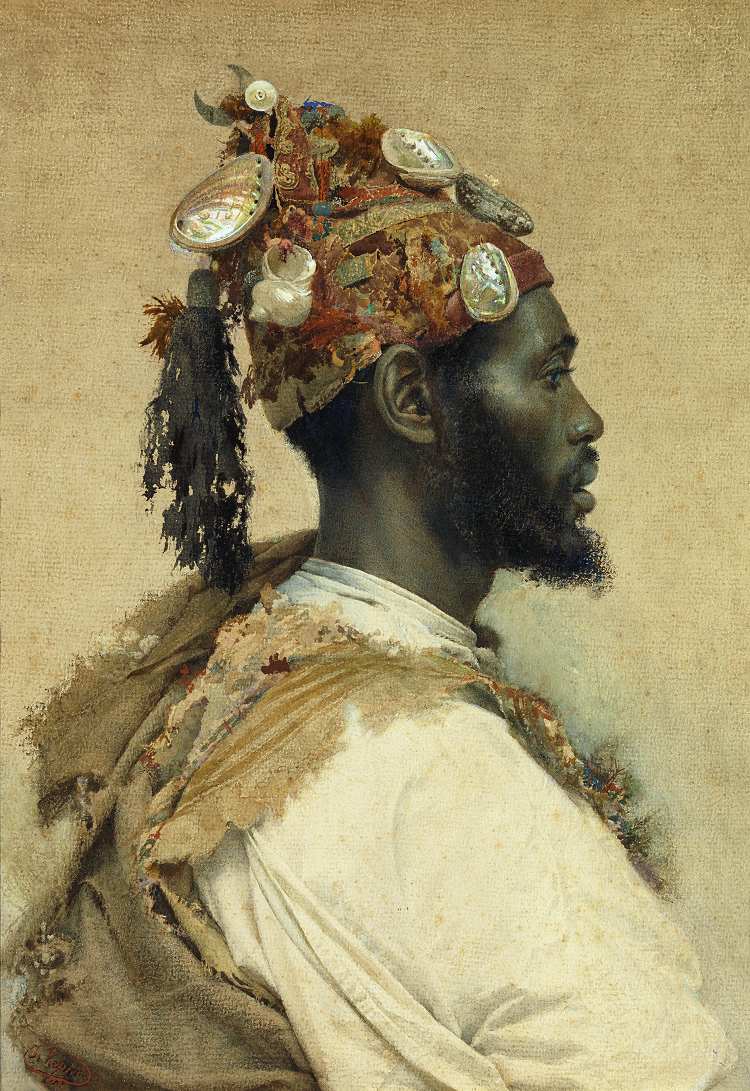I've not included titles and dates on any of these as what information I've been able to gather is incomplete, confused, contradictory, unreliable, unexplainable, untranslatable, or just completely elusive. So I'm going to choke down my pedantic compulsions this go 'round; I expect the unattributed beauty of these exquisite watercolors will more than suffice.
 |
| This appears to be unfinished. |
*
In 1871 he, Fortuny, and another artist friend traveled to Tangier, a trip which would prove decisive for his career. Two years later, he held his first showing of Orientalist paintings at the "International Art Circle of Rome". But Fortuny's sudden death the next year affected he deeply, and he decided to leave Rome. Instead of remaining in Spain, in 1876 he settled in Tangier, moving into a newly built home near the medina quarter and later acquiring an old theater to serve as his studio. Although he frequently travelled to exhibitions - as far afield as St. Petersburg and New York - and spent the summers with his family in Reus, he would live in Tangier for the rest of his life. In 1886, he married twenty-year-old Maria Manuela Valerega Cano, a Tangier native of Italian ancestry, thirty years his junior. Shortly after, a friend of his wife's died and they adopted her orphaned son.
Later in life, he began having respiratory and cardiovascular problems due to a lung infection he had contracted in 1903. He often did not have sufficient energy for work, and traveling also became very difficult. The financial situation was aggravated as well by a sharp decrease in the number of foreign visitors and tourists caused by political upheaval in the region. In 1907, he and his wife rented a house in Madrid in an effort to promote his work at an exhibition of the Círculo de Bellas Artes. His health problems eventually led to his death six years later at the age of seventy-seven. Initially, he was buried in Tangier but, in 1921, the government of Reus demanded that his body be brought back to his place of birth. Only twenty-six years later, in 1947, his remains were finally returned to Reus and reinterred near his friend Fortuny.
 |
| I couldn't find a larger version of this, but I thought it was too beautiful not to include. |




















Wow. I love your blog. Thanks so much for your efforts.
ReplyDeleteThank you, Michael!
Delete